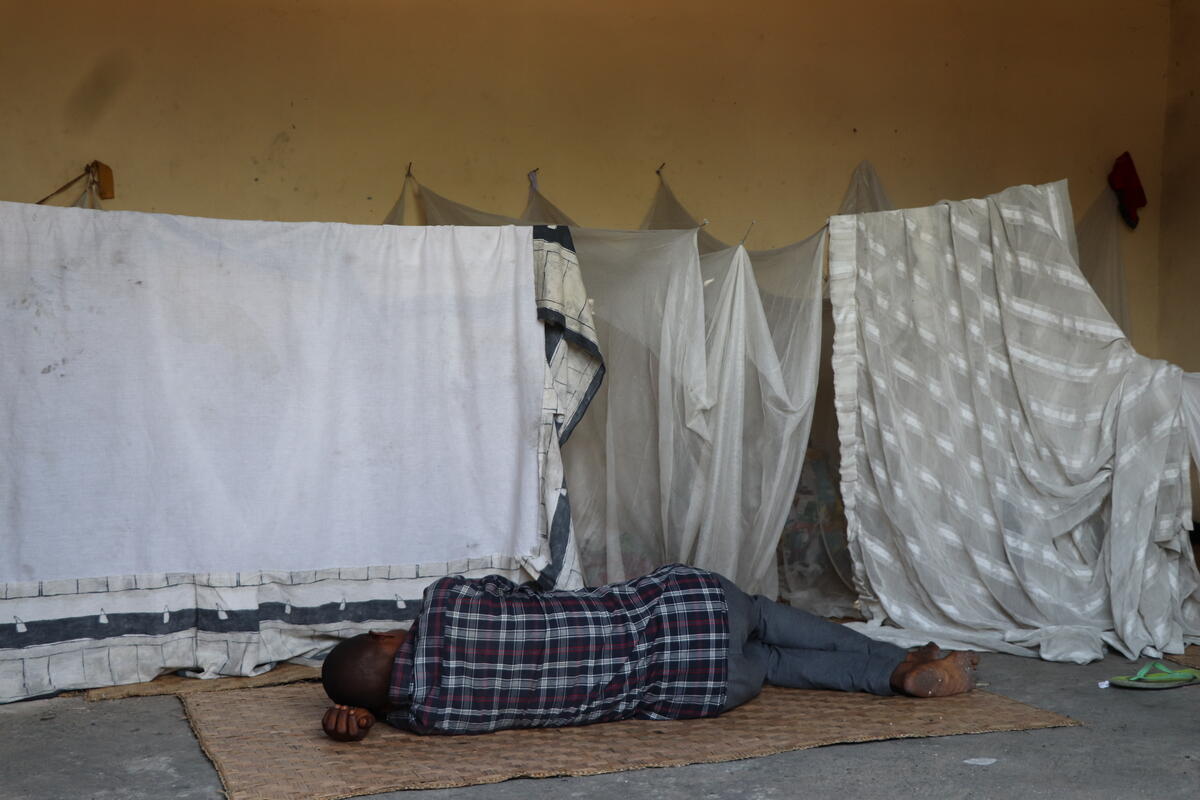Displacement leaves families struggling to adapt in Lake Chad region
Displacement leaves families struggling to adapt in Lake Chad region

“Six years, nine months.” Alimi Abali, a lean 52-year-old, does not hesitate when asked how long he and his family have been living in Forkoloum camp, home to 50,000 internally displaced people on the banks of Lake Chad.
Alimi may have built a new life for himself here, but he remains nostalgic for the one he left behind.
He fled to the camp with his three wives and 11 children after a sudden, violent attack on his home village. “Boko Haram attacked us one night when the whole village was gathered for festivities. They shot everyone. Children were abducted. Some of my brothers died. Their wives and children ran away with us,” he said.
Seven of his relatives were killed that night, while 13 of his nieces and nephews were kidnapped.
When they first came to Forkoloum seven years ago, the camp was much smaller. Today, the site stretches as far as the eye can see. “When we arrived, we were like strangers here. We slept under the trees,” Alimi said.
Over the intervening years, the family has replicated the home they once had. Several solid circular huts built with reeds from the lake and wooden branches collected in the bush stand in contrast to the makeshift shelters of the most recent arrivals. There is even a chicken coop and a horse that the family uses “like a bicycle, for daily travel”, Alimi joked.
Here, everyone knows him. People call him "Boulama" – chief in Chadian Arabic. This mark of respect reflects his status as a village leader. Among other things, he is responsible for resolving problems and tensions that arise within the community.
UNHCR, the UN Refugee Agency, is working in the camp and across the country to provide those who have fled their homes with the means to become self-sufficient. This includes providing cash so they can start businesses, as well as training in business management, and on peaceful co-existence with local communities and issues such as gender-based violence.
Draped in a shimmering pink veil, Alimi’s wife Yaka Moussa manages their most precious asset: a grocery stall she opened a little less than two years ago. “We received some money from UNHCR and with that we bought bulk commodities to resell,” she said, indicating basic goods including peanuts, oil, drinks and washing powder.

This small stall provides for the family's needs. “It is thanks to this that we feed, clothe and care for ourselves,” explained Alimi. He points to the baby in his wife's arms, “Our child was sick. He had to go to the hospital for three days and we were able to pay for it thanks to our business.”
Half of Lake Province’s inhabitants – 450,000 people – are displaced. Most are internally displaced people (IDPs) from other parts of the region or country, numbering more than 400,000. Alongside them are 30,000 former Chadian refugees who have returned from neighboring countries, often because of rising jihadist threats there. Finally, the region hosts more than 16,000 refugees from Nigeria and Niger. In total, there are 229 sites hosting IDPs and refugees in the area.
Mariama, 25, is a refugee from Nigeria, who arrived at Dar-Es-Salam camp a year ago. She fled with her husband and children after an armed attack in which several of her neighbours were killed. “For the moment, I want to stay here because I feel safe. But if stability returns to my country and my village, then I will return,” she said.
Inside Chad, the scale and frequency of attacks against civilians by jihadist groups has decreased over the past year, but the threat is still very real. Waves of fresh displacement have taken place since 2015, and the total IDP population in Lake Province has increased by 16 per cent since March 2020, with most of the newly displaced fleeing islands on Lake Chad where jihadist groups remain active.
"Our life is here now."
Many refugees and displaced people seek safety in urban areas, which are better protected by security forces. Their presence has put an added strain on already fragile communities with limited infrastructure. In some areas, populations have doubled in just a few years.
“We know today that a large number of displaced people will remain where they are. This socio-economic change must be taken into account in development plans,” said Papa Kysma Sylla, UNHCR Representative in Chad.
Back in Forkoloum camp, while Alimi continues to long for his former life, he is focusing his hopes for the more immediate future on opening a second grocery store and ensuring his children get an education. "“Our life is here now.”










